Project management is vital for delivering successful projects on time and within budget. That is where our comprehensive project management guide comes in. It involves essential processes and best practices that drive project success. Understanding these fundamentals is crucial for both seasoned managers and newcomers alike.
Project management encompasses planning, executing, and controlling a project from start to finish. It includes defining objectives, managing risks, allocating resources, and ensuring effective team communication. A structured approach optimizes resources, mitigates issues, and achieves desired outcomes.
Throughout history, project management has been instrumental in countless achievements. From ancient wonders like the Great Pyramid of Giza to modern software development, it has turned visions into reality. Today’s advanced tools and methodologies equip managers to navigate complex projects more effectively.
The following sections will explore various aspects of project management. We’ll cover the project lifecycle, essential skills, popular methodologies, and tools that streamline processes. This knowledge will help you become a more effective project manager and drive successful outcomes.
Key Takeaways
- Project management involves planning, executing, and controlling a project from start to finish.
- Effective project management optimizes resources, mitigates risks, and ensures successful project delivery.
- Project management has been crucial throughout history, from ancient wonders to modern-day projects.
- Understanding the project lifecycle, essential skills, methodologies, and tools is key to effective project management.
- Mastering project management processes can drive successful outcomes for organizations.
Understanding the Basics of Project Management
Project management is crucial across industries. It guides changes, additions, and new ventures within companies. Mastering project management basics is key for success, regardless of project size or complexity.
This section explores project definitions and effective management components. We’ll delve into the essentials of successful project execution and management.

Definition of a Project
A project is a unique, temporary endeavor with specific objectives. Success means meeting acceptance criteria within agreed timelines and budgets. A dedicated project manager oversees the entire process.
Key Components of Project Management
Effective project management balances time, cost, and quality. These elements form the foundation of every successful project. They’re essential for achieving desired outcomes.
- Time: Time management is crucial in project management. It involves scheduling techniques to outline work performance. Managers must ensure task completion within allocated timeframes.
- Cost: Cost management involves acquiring funds and managing finances. Managers must develop accurate estimates, create budgets, and monitor costs throughout the project.
- Quality: Quality management ensures deliverables and processes are fit for purpose. It involves defining standards, implementing assurance processes, and conducting control activities.
Project managers use various tools and techniques. These include Gantt charts, work breakdown structures (WBS), and critical path methods (CPM). A systematic approach improves success rates and optimizes resource allocation.
“According to research from the Project Management Institute, organizations that don’t integrate project management see their outright project failure rate increase by a factor of 2/3 compared to those with mature value-delivery processes.”
Understanding project management basics sets organizations up for success. Focusing on time, cost, and quality is crucial for managing projects effectively. This approach works for projects of all sizes and complexities.
Later sections will explore the project management lifecycle in depth. We’ll also discuss essential skills for project managers and popular methodologies.
The Project Management Lifecycle
The project management lifecycle guides projects from start to finish. It helps managers plan, execute, and deliver successful projects. This framework ensures projects meet stakeholder expectations and achieve desired outcomes.
Let’s explore each phase of the project management lifecycle in detail. Understanding these phases is crucial for effective project management.

Initiation Phase
The initiation phase proves a project’s value and feasibility. Managers communicate with stakeholders and identify the project scope. They set SMART goals and compile project proposals and charters.
Common tools in this phase include project proposals, project charters, and RACI charts. These help establish clear objectives and responsibilities.
Planning Phase
The planning phase creates a detailed roadmap for project execution. Managers set milestones, develop schedules, and establish change processes. They also assess risks and hold kick-off meetings.
Gantt charts and risk registers are essential tools for effective project planning. These help visualize timelines and identify potential obstacles.
Execution Phase
In the execution phase, the project plan is implemented to meet goals. Managers track progress, manage quality, and mitigate risks. They also oversee budgets and incorporate changes via change requests.
Tools like change requests and burndown charts are crucial. These help monitor and control the project during execution.
| Project Management Phase | Key Activities | Tools Used |
|---|---|---|
| Initiation | Communicating with stakeholders, identifying project scope, setting SMART goals, compiling project proposals and charters | Project proposals, project charters, RACI charts |
| Planning | Setting milestones, developing schedules, establishing change processes, assessing risks, holding kick-off meetings | Gantt charts, risk registers |
| Execution | Tracking progress, managing quality, mitigating risks, managing budgets, incorporating changes via change requests | Change requests, burndown charts |
Monitoring & Control Phase
The monitoring and control phase runs alongside execution. Managers compare actual performance against the project plan. They make adjustments to keep the project on track.
This phase emphasizes change control processes and early resource evaluation. Effective communication strategies prevent scope creep and enhance team collaboration.
Closing Phase
The closing phase marks project completion. Final deliverables are handed over to clients or stakeholders. Activities include conducting retrospectives and creating project closeout reports.
Impact reports and closeout reports document outcomes and lessons learned. These tools provide recommendations for future projects and celebrate successes.
“By following the project management lifecycle and utilizing appropriate tools and techniques, project managers can streamline the process in project management and ensure successful project outcomes.”
Essential Project Management Skills
Project managers need diverse skills to navigate complex processes. These include technical expertise and soft skills for effective leadership and problem-solving. Honing these essential skills enhances our ability to guide projects to success.

Communication is crucial for project managers. They spend 90% of their time communicating, preventing misunderstandings and ensuring smooth operations. Clear communication fosters team collaboration. With 85% of job success linked to soft skills, investing in communication significantly impacts professional growth.
Leadership is vital in project management. We guide and support team members, motivating them to achieve goals. Strong leadership inspires trust and resolves conflicts. Empathy helps us understand team concerns, promoting a positive work environment.
“The PMI’s 2018 Pulse of the Profession report indicates that 80% of project management professionals consider soft skills as more important today than they were five years ago.”
Problem-solving and critical thinking help navigate project challenges. Analyzing information logically and thinking creatively leads to effective solutions. Adaptability allows us to adjust plans when facing unexpected setbacks.
Time management and organization are key skills. They help prioritize tasks, meet deadlines, and maintain structure. Tools like Microsoft Office, Excel, and Project facilitate these processes.
| Skill | Importance |
|---|---|
| Communication | Prevents misunderstandings and ensures smooth project operations |
| Leadership | Inspires trust, resolves conflicts, and supports team members |
| Problem-solving | Identifies effective solutions to overcome challenges |
| Time management | Prioritizes tasks and meets deadlines |
| Organization | Maintains a structured approach to project management |
Mastering these skills enhances our project management abilities. Continuous learning and practice are essential for refinement. Investing in professional development and applying these skills contributes to our growth and project success.
The Role of a Project Manager
Project management relies heavily on project managers. They guide projects from start to finish, ensuring successful outcomes within set constraints. Let’s explore the key responsibilities and qualities of effective project managers.

Responsibilities of a Project Manager
Project managers have diverse responsibilities. They create actionable plans from project goals and lead cross-functional teams. Their tasks include developing detailed project plans and managing risks.
They also monitor progress, make adjustments, and communicate updates to stakeholders. Ensuring quality deliverables that meet client expectations is another crucial responsibility.
- Creating detailed project plans that outline the scope, objectives, timeline, and resources required
- Assigning tasks to team members and managing project risks
- Monitoring progress and making necessary adjustments to keep the project on track
- Communicating project status and updates to stakeholders
- Ensuring project deliverables meet quality standards and client expectations
The PMI’s Pulse of the Profession Report highlights resource management’s importance. Poor resource forecasting often leads to project failures. This underscores the need for effective resource allocation by project managers.
Qualities of an Effective Project Manager
Successful project managers possess unique skills and traits. These qualities help them navigate complex project management challenges. Key attributes include leadership, communication, and problem-solving abilities.
Adaptability and strong organizational skills are also crucial. These qualities enable project managers to handle changes and keep projects running smoothly.
- Leadership: Project managers must be able to inspire and motivate their teams, providing clear direction and guidance.
- Communication: Clear and open communication is vital for project success. Project managers serve as the bridge between project teams and stakeholders, ensuring everyone is on the same page.
- Problem-solving: Challenges and obstacles are inevitable in any project. Effective project managers are skilled problem-solvers who can think on their feet and find creative solutions.
- Adaptability: Projects often face changes and uncertainties. Project managers must be flexible and adaptable, ready to adjust plans as needed.
- Organizational skills: Managing multiple tasks, deadlines, and resources requires exceptional organizational abilities. Project managers must be detail-oriented and able to keep everything running smoothly.
“In high-performing organizations, 89% include a project manager, highlighting the crucial role they play in driving project success.”
Emotional intelligence is another vital trait for project managers. Research shows that happier employees are 13% more productive. This emphasizes the need for creating positive team environments.
Project managers are crucial for successful project delivery. They align projects with organizational goals and manage risks effectively. As demand grows, mastering project management becomes increasingly important in today’s fast-paced business world.
Project Management Methodologies
Selecting the right methodology is vital for effective project management. Various methodologies cater to unique industry needs and project types. Let’s examine some popular approaches and their key features.

Waterfall Methodology
Waterfall is a linear, sequential approach to project management. Each phase must be completed before moving to the next. This method suits projects with well-defined requirements and minimal expected changes.
Waterfall works best when the process in project management is straightforward and predictable. It provides a clear structure and timeline for project completion.
Agile Methodology
The agile methodology has gained popularity due to its flexibility and adaptability. It focuses on continuous improvement, collaboration, and delivering customer value. Agile teams work in short cycles called sprints, typically lasting 1-4 weeks.
This approach allows quick responses to changes and incorporates feedback effectively. Agile promotes a dynamic and responsive project environment.
“Agile is not a methodology, it’s a mindset. Agile is a way of thinking and acting.” – Alistair Cockburn, one of the authors of the Agile Manifesto
Two popular frameworks within the agile methodology are:
- Scrum: The scrum framework emphasizes teamwork, accountability, and iterative progress. Scrum teams work in sprints, with daily stand-up meetings to discuss progress and potential roadblocks.
- Kanban: Kanban is a visual approach to project management that utilizes kanban boards to visualize workflow and limit work in progress. It helps teams optimize their processes and identify bottlenecks.
Lean Methodology
Lean methodology aims to maximize value while minimizing waste. It focuses on continuous improvement and eliminating non-value-added activities. This approach streamlines processes to meet customer needs efficiently.
Lean principles can be applied to various aspects of project management. They help improve overall efficiency and productivity.
Six Sigma Methodology
Six Sigma is a data-driven methodology that minimizes defects and variability in processes. It follows the DMAIC approach: Define, Measure, Analyze, Improve, Control. This method identifies and eliminates root causes of problems.
Six Sigma is often used in projects requiring high precision and quality control. It provides a structured framework for process improvement.
Choosing the right methodology depends on project complexity, team size, industry, and organizational culture. Consider each approach’s strengths and limitations when selecting the best fit for your project.
| Methodology | Key Characteristics |
|---|---|
| Waterfall | Linear, sequential, well-defined requirements |
| Agile | Iterative, flexible, collaboration, customer-centric |
| Lean | Maximize value, minimize waste, continuous improvement |
| Six Sigma | Data-driven, minimize defects, structured approach (DMAIC) |
Understanding different project management methodologies helps make informed decisions. Adapt your approach to ensure project success and meet specific goals and requirements.
Project Management Tools & Techniques
Project managers use various tools to plan, execute, and track projects effectively. These tools help control project scope, schedule, and resources. Let’s explore some essential project management tools and techniques.

Gantt Charts
Gantt charts visually display project tasks and milestones on a timeline. They show the entire project schedule at once. This makes it easier to spot dependencies, monitor progress, and adjust timelines.
Gantt charts are vital for project planning, scheduling, and tracking. They help managers make informed decisions about resource allocation and task prioritization.
Work Breakdown Structure (WBS)
The Work Breakdown Structure organizes work into manageable pieces. It breaks down projects into smaller components like deliverables, sub-deliverables, and work packages. This breakdown helps understand the scope of work better.
WBS allows managers to assign responsibilities and track progress more effectively. It’s a fundamental element in any project management guide.
Critical Path Method (CPM)
The Critical Path Method identifies the sequence of tasks determining a project’s overall duration. It analyzes relationships between tasks and their durations. This analysis reveals the longest path through the project, known as the critical path.
CPM helps prioritize tasks, allocate resources, and monitor progress. It ensures the project stays on track by focusing on critical activities.
| Project Management Methodology | Key Features | Best Suited For |
|---|---|---|
| Waterfall | Linear, sequential approach with distinct phases | Short and simple projects with clear guidelines |
| Agile | Iterative, flexible approach with short development cycles | Projects with changing requirements and customer collaboration |
| Lean | Focuses on minimizing waste and maximizing value | Projects aimed at process improvement and efficiency |
| Six Sigma | Data-driven approach to reduce defects and improve quality | Projects focused on process optimization and cost reduction |
Project Network Diagrams
Project Network Diagrams visually represent project activities and their relationships. They help understand task dependencies and identify potential bottlenecks. These diagrams also assist in optimizing the project schedule.
By tracking project elements with network diagrams, managers can make informed decisions. This tool helps keep projects on track and within budget.
Project managers also use software solutions for tracking, resource allocation, and risk management. These tools improve collaboration and provide real-time insights into project performance.
“The key to successful project management is selecting the right tools and techniques for each unique project and adapting them as needed to ensure optimal results.”
Leveraging these powerful tools and techniques enables effective project management. They help mitigate risks and deliver successful outcomes for organizations.
The Importance of Effective Communication in Project Management
Effective communication is crucial for project management success. Project managers must ensure all stakeholders are aligned throughout the project lifecycle. Clear, consistent, and transparent communication helps navigate complex projects smoothly.

The Association for Project Management emphasizes the importance of defining project goals at the outset. Managers should clarify team members’ expectations and responsibilities. This initial communication aligns everyone’s efforts towards common objectives.
Project management communication involves both verbal and non-verbal methods. The choice of communication style should fit the project and organization’s needs. Active methods like in-person meetings and video conferencing allow direct interaction with team members.
Passive communication methods include blogs, emails, and online bulletin boards. These provide alternative ways to share project information without direct interaction.
“Communication is the most important aspect in project management as project managers spend a majority of their time communicating to coordinate efforts.” – Assistant Teaching Professor Sarmann Kennedyd
Successful project managers use both passive and active communication methods. This ensures all team members receive information in their preferred way. Team collaboration software facilitates instant communication and access to project materials.
Cultural and language barriers must be considered to avoid misunderstandings in diverse teams. Project managers should tailor their communication methods to individual stakeholders. Strong communication skills enhance project leadership and deliver exceptional results.
| Communication Type | Purpose |
|---|---|
| Internal Communication | Detailed planning discussions among team members |
| External Communication | Formal communication aimed at key stakeholders |
| Vertical Communication | Communication between different levels of the organizational hierarchy |
| Horizontal Communication | Communication between individuals at the same level of the organizational hierarchy |
| Diagonal Communication | Communication between individuals at different levels and in different departments of the organization |
Effective communication binds projects together. Mastering communication fosters strong stakeholder relationships and seamless team collaboration. Project managers must refine their skills to adapt to the evolving project management landscape.
Managing Project Risks & Uncertainties
Project management inherently involves risks and uncertainties. A solid risk mitigation plan is essential for success. Proactively identifying and assessing potential risks allows us to develop effective strategies. These strategies minimize impact and ensure project success.

Project risks fall into three main categories: preventable, strategy, and external. Preventable risks can be avoided with effort, like key resources leaving or pricing changes. Strategy risks impact overall business direction, such as leadership changes prompting shifts. External risks originate outside the team or organization, including natural disasters or supplier bankruptcy.
Effective risk management requires a structured approach. Risk identification is the first step and should be ongoing throughout the project. This involves ensuring team understanding of risks, brainstorming with stakeholders, and using techniques like lessons learned.
After identification, the process includes analyzing, evaluating, strategizing, and continuous monitoring. Risk management strategies vary based on nature and severity. These include avoidance, acceptance, transference, mitigation, and exploitation.
- Avoidance: Eliminating the risk by changing the project plan or scope.
- Acceptance: Acknowledging the risk and deciding to proceed without taking any action.
- Transference: Shifting the risk to another party, such as through insurance or contracts.
- Mitigation: Taking steps to reduce the likelihood or impact of the risk.
- Exploitation: Leveraging positive risks (opportunities) to benefit the project.
Project risks manifest in various forms: financial, strategic, performance, and external. Financial risks include rising costs, inaccurate budgets, or funding challenges. Strategic risks stem from errors in strategy selection or unsuitable project management methodologies.
Performance risks involve missed deadlines, scope creep, or project delays. External risks range from market volatility and changing regulations to labor strikes and inclement weather.
“The greatest risk is not taking any risk… In a world that’s changing really quickly, the only strategy that is guaranteed to fail is not taking risks.” – Mark Zuckerberg
A proactive approach to risk management is crucial for project success. Incorporating it into our project management guide helps navigate uncertainties. Continuous risk identification, analysis, and mitigation steer projects towards success and goal achievement.
Ensuring Quality in Project Deliverables
Delivering high-quality project deliverables is crucial. We focus on quality planning, assurance, and control to achieve this goal. These key aspects help us meet or exceed stakeholder expectations.
Quality management is vital for successful project execution. Clear standards and continuous monitoring improve processes. Effective project leadership drives quality efforts and fosters excellence within the team.
Quality Planning
Quality planning is the first step in our process. It identifies specific requirements for each deliverable. We document processes and metrics to measure quality throughout the project lifecycle.
Quality Assurance
Quality assurance ensures project processes are followed effectively. Regular audits and peer reviews maintain high standards. This proactive approach helps identify potential issues before they impact the final product.
Quality Control
Quality control involves ongoing monitoring of project results. We implement rigorous testing procedures and use quality control templates. This approach helps detect and resolve issues quickly, ensuring consistent quality.
Our commitment to quality extends beyond the project lifecycle. We track lessons learned and implement them in future projects. Advanced tools like online Gantt charts streamline our efforts.
| Quality Management Aspect | Key Focus |
|---|---|
| Quality Planning | Defining quality requirements and documenting processes |
| Quality Assurance | Ensuring adherence to processes and planned activities |
| Quality Control | Monitoring and assessing project results to identify and correct defects |
By prioritizing quality in our project management, we deliver exceptional results. This approach drives business success and exceeds stakeholder expectations.
Stakeholder Management in Projects
Managing stakeholders is crucial for project success. Stakeholders are individuals or groups with vested interests in project outcomes. They can significantly influence a project’s direction. Let’s explore stakeholder communication and management complexities.
Stakeholders fall into two categories: internal and external. Internal stakeholders include project managers, team members, sponsors, and investors. They have direct stakes in the project. External stakeholders are customers, contractors, suppliers, and government agencies. Their interests must be considered carefully.
Effective stakeholder management requires a structured approach. This involves identifying stakeholders, assessing their interests, and developing engagement strategies. Regular updates, feedback solicitation, and involving key stakeholders in decisions are essential components.
A well-crafted stakeholder management plan typically includes the following elements:
- List of stakeholders
- Stakeholder map
- Stakeholder prioritization
- Communication plan
To create an effective stakeholder management plan, project managers can follow these five steps:
- Identify stakeholders
- Prioritize stakeholders
- Interview stakeholders
- Create a Power Interest Grid
- Set and manage expectations
Stakeholder analysis is crucial for management. It involves identifying, mapping, and prioritizing stakeholders. This process helps understand stakeholders’ perspectives, skills, authority, and influence. Categorizing stakeholders as primary or secondary helps tailor engagement strategies.
“Effective stakeholder management is not just about managing expectations; it’s about building strong, trust-based relationships that foster collaboration and drive project success.”
Good stakeholder management offers numerous benefits. It increases focus and clarity for stakeholders. It reduces project risks and enhances diverse perspectives. Satisfied clients lead to improved financial returns. Repeatable systems within the organization are created.
Stakeholder management is vital for project success. Identifying, analyzing, and engaging stakeholders builds strong relationships. It manages expectations and drives projects towards successful outcomes. Effective communication unlocks stakeholder management’s full potential, ensuring harmonious collaboration.
Budgeting & Cost Control in Project Management
Cost management is crucial in project management. It includes estimating costs, creating budgets, and monitoring expenses throughout a project’s lifecycle. Accurate estimation is vital for developing realistic budgets that cover all necessary resources.
Precise cost estimation is essential in project management. About 28% of projects fail due to inaccurate cost estimates, highlighting the need for meticulous budgeting. Successful projects often allocate 10-15% of their total budget for contingency reserves, reducing the risk of overruns.
Estimating Project Costs
Cost estimation is the first step in effective budgeting and control. It involves identifying all required resources and assigning costs to each item. This process should be thorough, considering both direct and indirect costs.
Direct costs include labor, materials, and equipment. Indirect costs encompass overhead expenses such as administrative costs and utilities. Accurate estimation requires a comprehensive approach to resource allocation.
- Break down the project into smaller, manageable tasks
- Identify the resources needed for each task
- Gather historical data from similar projects
- Consult with subject matter experts
- Account for potential risks and uncertainties
Creating a Project Budget
After estimating costs, the next step is creating a comprehensive project budget. This financial roadmap outlines expenditures for each project aspect. Ensure the budget is realistic, achievable, and aligned with project goals.
“The project budget is a financial plan encompassing all project expenditures, and factors contributing to successful project budget management include capturing project scope, stakeholder input, trust building, and utilizing tools such as Earned Value Method and Variance Analysis.”
Consider these factors when creating a project budget:
- Allocate funds based on the estimated costs
- Include a contingency reserve for unexpected expenses
- Obtain approval from key stakeholders
- Communicate the budget to all relevant parties
Monitoring & Controlling Costs
Once the project begins, monitoring and controlling costs is crucial. This involves comparing actual costs against budgeted amounts and taking corrective action when necessary. Effective cost control prevents overruns and ensures project completion within the approved budget.
Project managers should implement these strategies for effective cost monitoring:
- Regularly track and record actual costs
- Compare actual costs against the budget
- Identify and analyze variances
- Take corrective action when necessary
- Communicate cost performance to stakeholders
| Cost Control Technique | Description |
|---|---|
| Earned Value Management (EVM) | A method that integrates scope, schedule, and cost to measure project performance and progress |
| Variance Analysis | Comparing actual costs against budgeted costs to identify and analyze variances |
| Forecasting | Predicting future costs based on current performance and trends |
| Change Control | Managing changes to the project scope, schedule, and budget to minimize their impact on costs |
By implementing effective budgeting and cost control techniques, project managers can ensure that their projects are completed within the approved budget and deliver the desired outcomes. This approach supports individual project success and the organization’s overall financial health.

Project Management Templates
Project management templates are essential tools for streamlining planning and management processes. They save time and ensure consistency across projects. Hundreds of customizable templates are available to help project managers work efficiently.
Many software solutions offer built-in templates. Free and customizable options are also available online. ClickUp provides a comprehensive Project Management Template with 7 key functionalities accessed through ClickApps.
Their High-Level Project Management Plan Template offers 3 custom statuses and 5 pre-set Custom Fields. The Project Schedule Template features 3 custom statuses. ClickUp’s Schedule Blocking Template has 4 custom statuses and 5 Custom Fields.
Industry-specific templates cater to various needs. These include construction schedule templates, new product development guides, and Agile sprint plans. Marketing campaign templates, risk tracking tools, and resource plan templates are also available.
Event planning templates help organize costs and timelines. Implementation plan templates aid in quick action plan execution. These tools cover diverse project management needs across industries.
- Construction schedule templates for building Gantt charts
- New product development templates for guiding products through concept, design, and marketing phases
- Agile sprint plan templates for planning, executing, and tracking sprints
- Marketing campaign templates for effectively planning and executing campaigns
- Real-time risk tracking templates for identifying, actioning, and tracking project risks
- Resource plan templates for tracking resource usage, work schedules, and managing costs
- Implementation plan templates for quick implementation of action plans
- Event plan templates for planning events from start to finish, including costs and timelines
Key components of a project management plan include objectives, scope, and schedule management. Cost, resource, and communication plans are crucial. Stakeholder, procurement, and closure criteria should also be addressed.
A 5-step process helps create an effective plan. It involves identifying baselines, determining dependencies, and defining stakeholders. Setting milestones and assigning responsibilities complete the process.
- Identify project baselines
- Determine dependencies
- Identify stakeholders
- Define milestones
- Assign responsibilities
A sample project management plan outline includes several important sections. These cover various aspects of project planning and execution. The table below provides an overview of these sections.
| Section | Description |
|---|---|
| Executive Summary | Overview of the project, its objectives, and key stakeholders |
| Project Introduction | Background information, project purpose, and scope |
| Project Objectives | Specific, measurable, achievable, relevant, and time-bound (SMART) goals |
| Scope | Detailed description of project deliverables, boundaries, and exclusions |
| Schedule Management | Project timeline, milestones, and critical path |
| Cost Management | Budget, cost estimates, and financial controls |
| Quality Management | Quality standards, assurance, and control processes |
| Resource Management | Human resources, equipment, and materials required for the project |
| Risk Management | Identification, assessment, and mitigation of potential risks |
| Communication Plan | Strategies for effective communication with stakeholders |
| Stakeholder Management | Identification, analysis, and engagement of project stakeholders |
| Procurement Management | Processes for acquiring goods and services from external sources |
| Change Management | Procedures for handling changes to project scope, schedule, or budget |
| Closure Criteria | Requirements for project completion and acceptance |
| Project Organization | Roles, responsibilities, and reporting structure of the project team |
“By leveraging project management templates and tools, we can enhance our project planning and execution, ensuring that all critical aspects are addressed and that our projects stay on track for success.”
Key Project Management Roles
Project management involves various roles working together for successful project completion. Each role contributes uniquely to the project’s success. Let’s explore these critical roles and their responsibilities.
The project sponsor secures funding, resources, and support for the project. They champion the project within the organization. This ensures the project receives necessary attention and priority.
Project team members carry out the actual work. They bring skills, expertise, and experience to complete tasks. Effective communication and collaboration among team members are crucial for success.
“Teamwork is the ability to work together toward a common vision. The ability to direct individual accomplishments toward organizational objectives. It is the fuel that allows common people to attain uncommon results.” – Andrew Carnegie
Subject matter experts (SMEs) possess specialized knowledge in specific areas. They provide guidance and insights to the project team. Their expertise helps solve complex problems and keeps the project on track.
The project steering committee consists of senior-level stakeholders. They provide strategic direction and decision-making support. This committee ensures the project aligns with the organization’s overall goals.
| Role | Key Responsibilities |
|---|---|
| Project Manager | Develops project planManages project schedule and budgetCoordinates project activitiesCommunicates with stakeholders |
| Project Sponsor | Secures funding and resourcesChampions project within organizationProvides high-level support |
| Project Team Members | Carry out project workBring skills and expertiseCollaborate to deliver results |
| Subject Matter Experts | Provide specialized knowledgeOffer guidance and insightsHelp solve complex problems |
Business analysts define requirements and ensure projects meet business needs. Quality assurance specialists work to maintain required standards. Vendors or contractors may provide additional resources or expertise.
Understanding these roles and their interactions builds stronger project teams. Each role brings unique value to the project. Together, they drive projects to successful completion.
What Skills Are Needed to Succeed In Project Management?
Excelling in project management requires a diverse skill set. Strong leadership, excellent communication, and meticulous attention to detail are crucial. Effective planning and organization help break down complex projects into manageable tasks. Setting realistic deadlines and allocating resources efficiently are key components of success.
Problem-solving and decision-making skills are vital for managing risks and adapting to challenges. Analytical abilities and proficiency with project management tools are essential. These skills enable managers to analyze data, identify trends, and make informed decisions.
Familiarity with project management software and frameworks like Agile, Scrum, and Waterfall is crucial. Interpersonal skills are equally important. Project managers must lead diverse teams, foster collaboration, and resolve conflicts effectively.
Building relationships with stakeholders, clients, and team members is essential for project success. These connections ensure smooth communication and cooperation throughout the project lifecycle.
“A successful project manager is a skilled communicator, a strong leader, and a master organizer.”
The demand for skilled project managers is rising across industries. Projections show a 33% increase in the United States from 2017 to 2027. Globally, the Project Management Institute forecasts a need for 25 million professionals by 2030.
| Skill | Importance |
|---|---|
| Communication | Effective communication is crucial to avoid project delays, budget overruns, and project failure. |
| Organization | Organizational skills are essential for coordinating tasks, timelines, and efforts among various teams and stakeholders. |
| Flexibility | Flexibility is necessary to adapt to changes and challenges that may arise unexpectedly. |
| Leadership | Strong leadership skills are key to bringing together individuals from diverse backgrounds and guiding them towards project goals. |
| People Skills | People skills, including the ability to motivate team members, foster collaboration, and resolve conflicts, are vital for successful project management. |
Project management continues to evolve, incorporating AI skills and new methodologies. Successful managers must continuously develop their abilities to stay competitive. Adapting to new tools and techniques is crucial in this dynamic field.
Which Are the Best Project Management Certifications?
Selecting the ideal project management certification can be daunting due to the numerous options available. Each certification offers unique advantages and targets specific skill sets and experience levels. Here’s a list of top project management certifications widely recognized in the industry.
The Project Management Professional (PMP) by the Project Management Institute (PMI) is highly sought-after. With over a million holders worldwide, it showcases expertise in effective project management. The Certified Associate in Project Management (CAPM), also from PMI, suits those with less experience.
For agile enthusiasts, the PMI Agile Certified Practitioner (PMI-ACP) and Certified ScrumMaster (CSM) are excellent choices. These certifications focus on agile practices and flexible work environments.
“Obtaining a project management certification not only validates your skills and knowledge but also enhances your credibility and marketability in the industry.”
Other notable certifications include:
- PRINCE2 certifications, which are widely recognized in the UK and Europe
- CompTIA Project+ certification, which focuses on the fundamentals of project management
- Certified Project Director certification by GAQM, which is suitable for experienced professionals
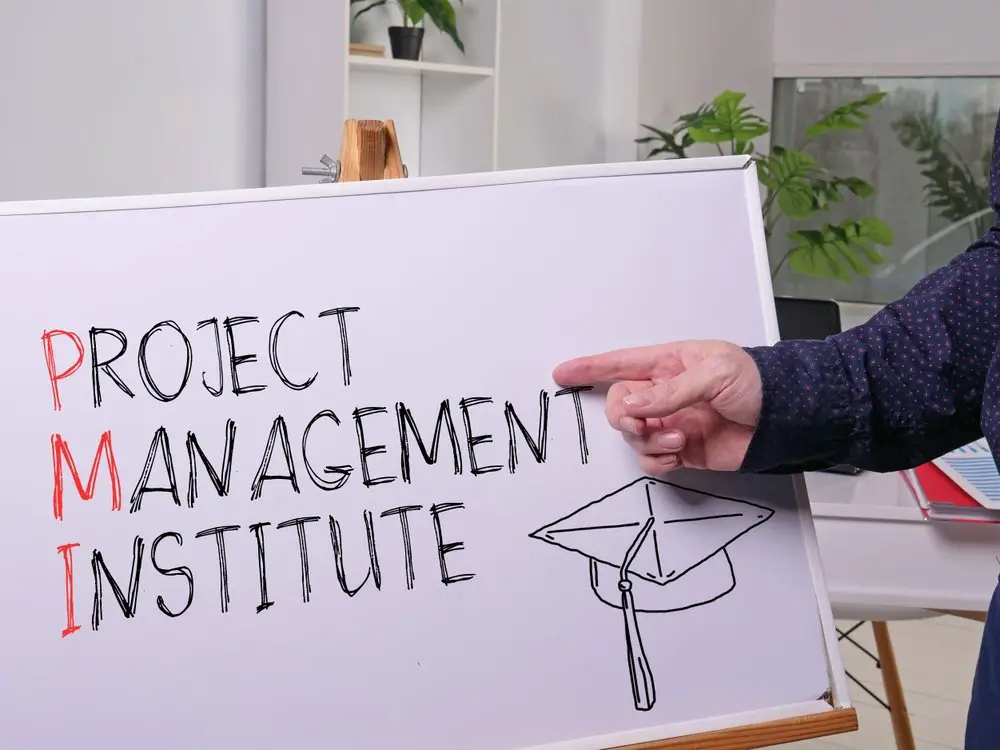
When choosing a certification, consider factors like cost, requirements, and alignment with career goals. The following table provides an overview of popular certifications and their key details:
| Certification | Offered By | Price | Requirements |
|---|---|---|---|
| PMP | PMI | $555 (non-members), $405 (members) | 35 hours of project management education, 7,500 hours of experience (with a bachelor’s degree) or 10,500 hours (without a degree) |
| CAPM | PMI | $300 (non-members), $225 (members) | 23 hours of project management education, no experience required |
| PMI-ACP | PMI | $495 (non-members), $435 (members) | 21 contact hours of agile practices training, 12 months of project experience within the last 5 years |
| CSM | Scrum Alliance | $995 to $1,395 | Completion of a two-day CSM training course |
The best certification for you hinges on your unique circumstances and aspirations. Carefully evaluate your options and consider long-term benefits. This approach will help you make an informed decision that boosts your professional growth in project management.
Conclusion
This guide has explored essential elements of successful project delivery. We’ve covered fundamental processes, key tools, and techniques to help you navigate project management complexities. These insights will enhance your project leadership skills.
Effective project management balances cost, time, and quality. A 2002 survey of 236 project managers identified these as crucial success measures. Project managers must apply methodologies like Waterfall and use tools such as PERT/CRM and EVM.
The PMBOK guide recognizes 47 processes across five groups and ten knowledge areas. It’s an invaluable resource for optimizing project management approaches. Mastering these concepts can significantly improve your project outcomes.
Continuous learning is vital in this dynamic field. With the right mindset and strategies, you can achieve remarkable results. Embrace these principles to drive organizational success and deliver value to stakeholders.
Frequently Asked Questions
What are the key components of project management?
Time, cost, and quality form the core of project management. Time focuses on scheduling, cost manages finances, and quality ensures deliverables meet standards.
What skills are essential for project managers?
Project managers need leadership, communication, and negotiation skills. Problem-solving, time management, and risk management are also crucial. These skills help in leading teams and managing stakeholders effectively.
What are the responsibilities of a project manager?
Project managers plan, execute, and close projects. They set goals, create timelines, and allocate resources. Managing budgets and ensuring quality standards are met also fall under their purview.
What are some popular project management methodologies?
Waterfall is linear and sequential. Agile focuses on continuous improvement. Lean maximizes value while minimizing waste. Six Sigma is data-driven and aims to minimize defects.
What tools and techniques do project managers use?
Gantt charts visualize project timelines. Work Breakdown Structures break projects into manageable components. The Critical Path Method identifies crucial task sequences. PERT charts analyze and schedule complex projects.
Why is effective communication important in project management?
Effective communication aligns team members, stakeholders, and clients on project goals. It helps identify issues early and facilitates collaboration. Good communication maintains positive relationships throughout the project.
How do project managers handle risks and uncertainties?
Project managers identify and assess potential risks early. They develop strategies to mitigate or respond to these risks. Ongoing monitoring and reassessment of risks is crucial throughout the project.
How do project managers ensure quality in project deliverables?
Quality assurance involves planning, assuring, and controlling project deliverables. Managers define standards and establish processes to meet them. They monitor results to identify and correct defects or deviations.
What is stakeholder management in projects?
Stakeholder management identifies individuals or groups interested in the project. It assesses their interests and potential impact. Managers develop strategies to engage stakeholders and align the project with their expectations.
How do project managers control project costs?
Project managers estimate costs and create budgets. They monitor and control expenses throughout the project. Regular comparisons between actual and budgeted costs help identify variances and guide corrective actions.
What skills do project managers need to succeed?
Successful project managers possess strong leadership and communication skills. They excel in planning, organization, and problem-solving. Decision-making, risk management, and team motivation are crucial. Analytical skills and proficiency with project management tools are also important.
What are some widely recognized project management certifications?
The Project Management Professional (PMP) and Certified Associate in Project Management (CAPM) are well-known certifications. PRINCE2 certifications are also widely recognized. Agile certifications include Certified ScrumMaster (CSM) and SAFe Agilist.


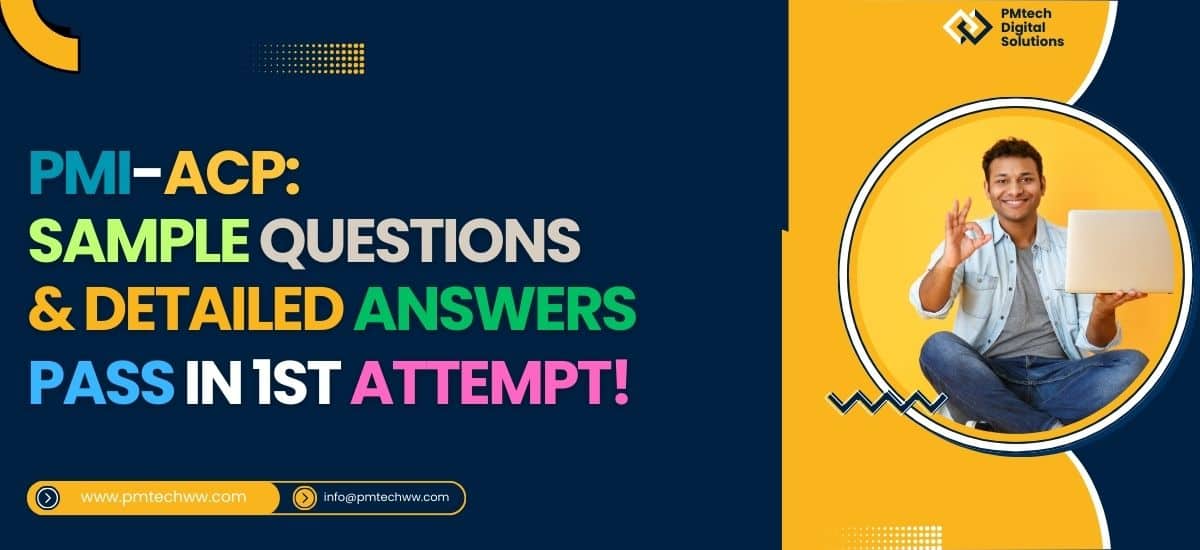
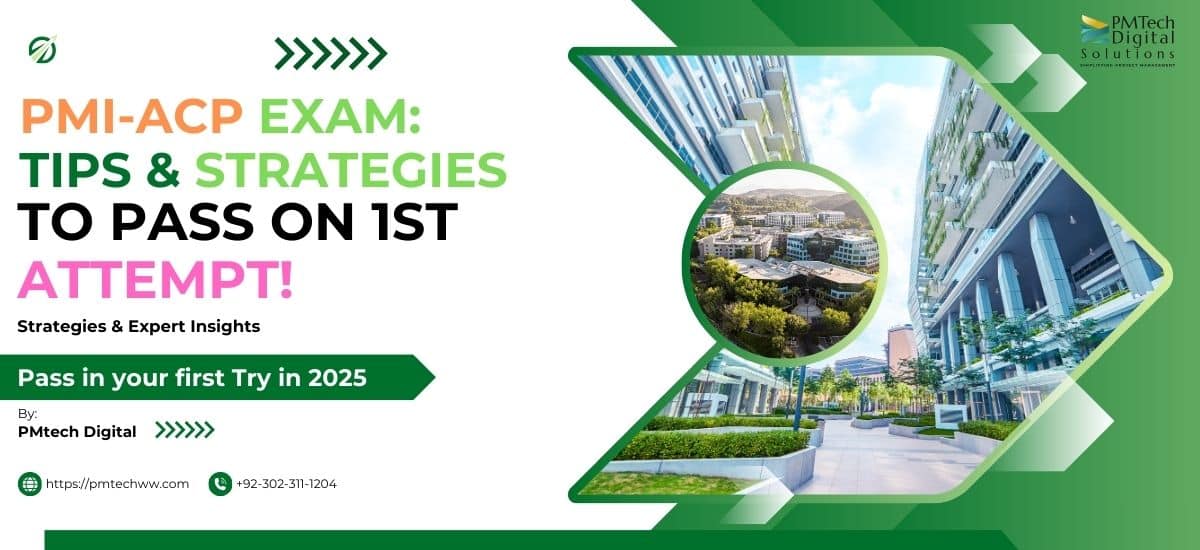
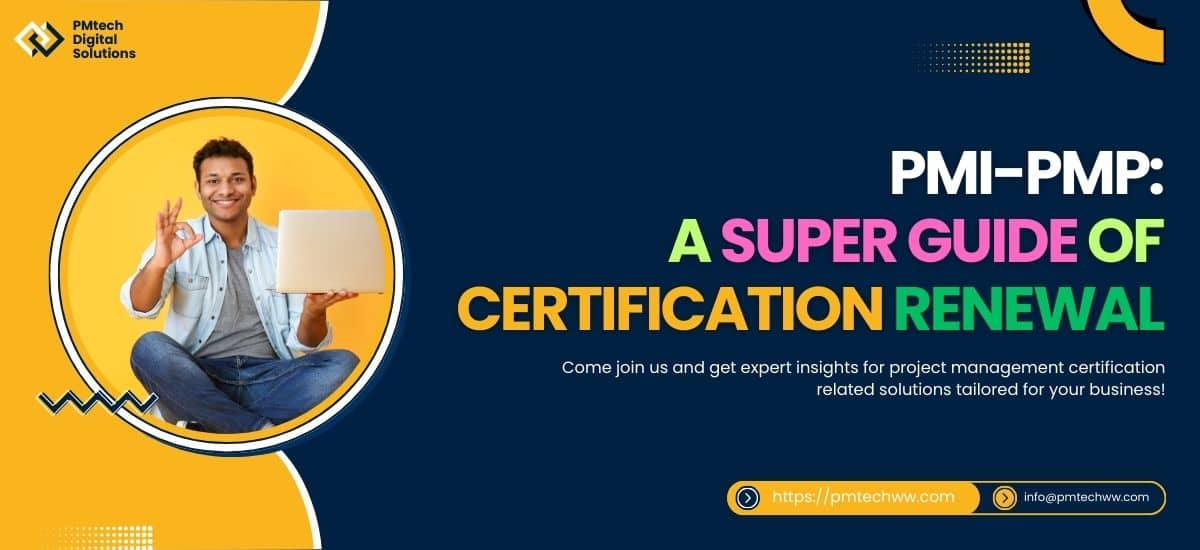
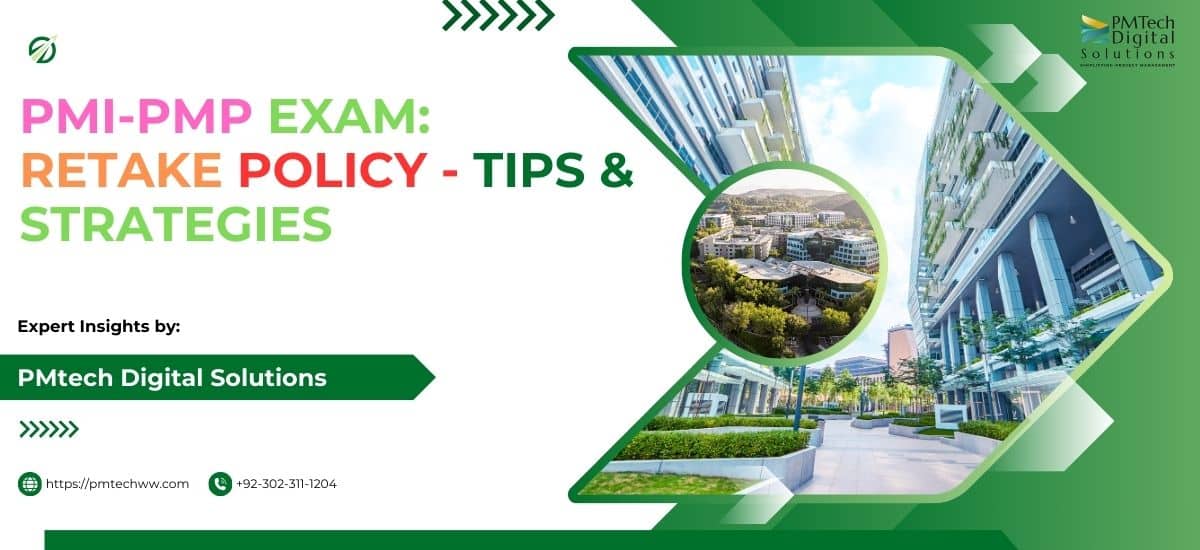
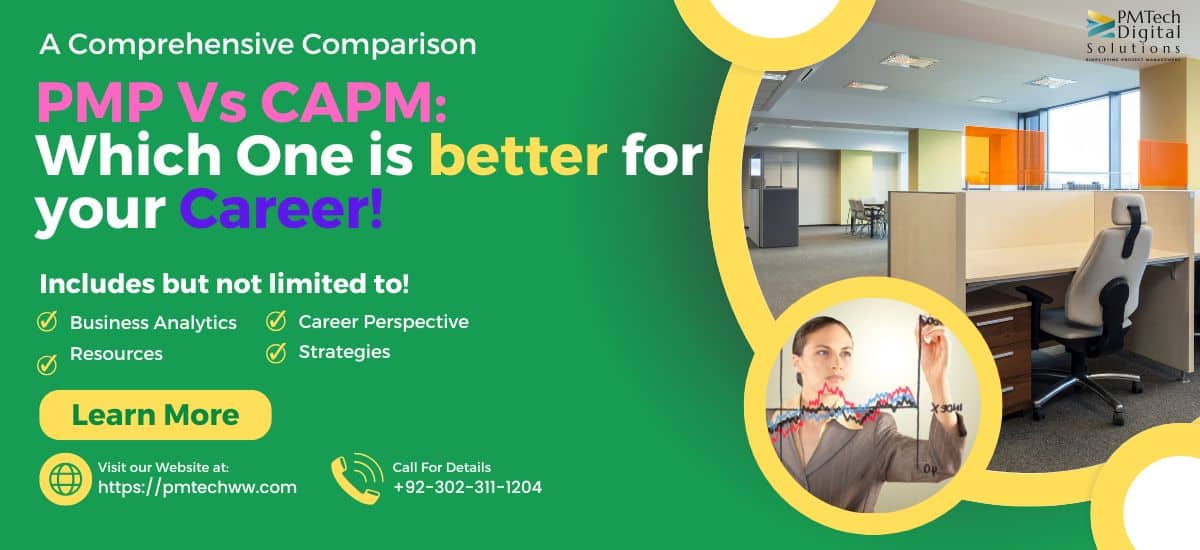





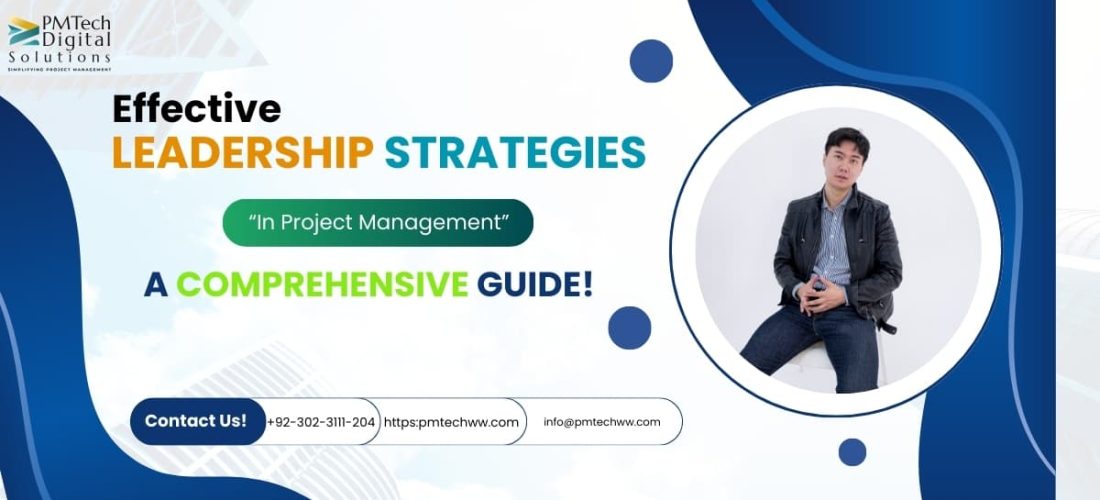
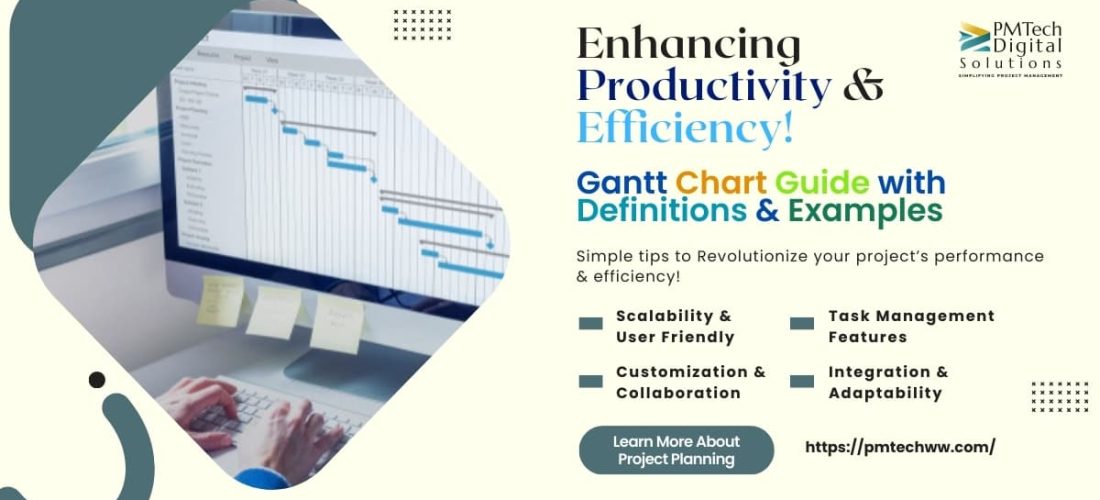



29 Responses
Very efficiently written information. It will be useful to anyone who employess it, as well as me. Keep doing what you are doing – for sure i will check out more posts.
Your article helped me a lot, is there any more related content? Thanks!
WONDERFUL Post.thanks for share..more wait .. …
I want to get across my love for your kind-heartedness supporting all those that really need guidance on the idea. Your very own dedication to passing the solution all-around appeared to be rather powerful and have truly empowered some individuals just like me to achieve their targets. Your new invaluable recommendations can mean so much a person like me and even further to my peers. Warm regards; from each one of us.
demais este conteúdo. Gostei muito. Aproveitem e vejam este site. informações, novidades e muito mais. Não deixem de acessar para aprender mais. Obrigado a todos e até mais. 🙂
It¦s really a nice and helpful piece of information. I¦m happy that you just shared this helpful info with us. Please stay us up to date like this. Thanks for sharing.
Thank you for your sharing. I am worried that I lack creative ideas. It is your article that makes me full of hope. Thank you. But, I have a question, can you help me?
As one user has said, “a little bit of voice cracking close to the end of the cycle” indicates an onset of virilizing
symptoms. It’s clever for any female to cease taking Primo at that time (unless virilizing effects are not a concern).
“I publicly made an announcement a couple days in the past on Instagram saying I’m going to do a present in Ireland. Larry Wheels shared that his determination to pursue bodybuilding didn’t come from a real place. As An Alternative, it was to build his brand and bring eyeballs again onto him. As A Result Of of this, he has determined to withdraw from the show he was preparing for. Larry Wheels initially went off PEDs after a visit to the doctors to get his health checked.
Efficiency athletes may also benefit from strengthening and healing joint and connective tissue. Whereas bodybuilders and athletes have used Deca-Durabolin for nicely over 50 years, no anabolic steroid can ever be proclaimed as protected when used for performance enhancement functions. Subsequently, getting your T levels and production back on monitor as quickly as possible after a Deca cycle is significant. This is the place your post-cycle remedy protocol is so important, as regaining testosterone perform is probably considered one of the two big reasons we do PCT (the other being to retain our hard-earned gains).
Many bodybuilders consider that Winstrol is extra powerful than Anavar. Cabergoline is a dopamine receptor that successfully inhibits the excessive ranges of prolactin. Principally, high ranges of prolactin in your blood cause this downside. Nonetheless, it’s nearly always stacked with other steroids so finding its individual power is somewhat difficult. The different steroids that best swimsuit the Deca Durabolin stack are Testosterone, Anadrol, or Dianabol.
Your meals intake will depend upon what you purpose to get from your cycle, with two broad categories being bulking or slicing. Trying to pull off too much weight is a standard mistake for model spanking new gear customers. Utilizing steroids will all be for nothing when you don’t get your food regimen and training right25. So what should you eat when on cycle, and how do you’ve got to work out?
In the actual world, when males are using legit Primo for a protracted cycle with affordable expectations, there aren’t many negatives to report since just about everybody tolerates this steroid. Post-injection pain can be one reliable concern about Primobolan, and comments like “I get excessive ache from Primo” usually are not uncommon. Some guys can tolerate the injections very properly, however others will undergo with PIP enough to warrant stopping the usage of this steroid altogether. Primobolan could be slotted right into a cycle containing all types of other AAS.
Girls who use Primo at doses low enough to keep away from virilization will find that achieving a dry and outlined physique is the cornerstone of a Primo cycle. This can take a while to develop, and girls must be prepared to wait around 5 weeks to begin seeing noticeable physique advantages. Operating a 10-week cycle is a reasonable aim for females, with doses up to 50mg per week. You will have to be moderately lean already to get one of the best results out of Primo. Anything above 15% body fats (men) won’t give you that spectacular hardness and definition across the shoulders as if you’re nice and lean before going into the cycle. Its delicate nature signifies that we have to use Primobolan at a better dosage degree than may be the case with most different steroids, and this can embody newbie users as well.
Primobolan and Anavar is a well-liked selection, although some ladies with a better tolerance than others could use testosterone as their base steroid. Additionally, during an intermediate cycle, steroids in supplements – http://www.allgreatquotes.com – similar to Masteron Propionate could also be stacked well with Testosterone Propionate.
This mixture contributes to lean muscle growth with definition and
hardness.
Kidney and liver perform ought to be unaffected by Primo,
and it shouldn’t impression levels of cholesterol either.
Opposite to in style belief, girls can and do use injectable Primo
just as usually as oral. Females using Primobolan Depot can purpose for a
50mg/week starting dose, and should you reply well, rising it to 100mg/week is
most likely going all you’ll ever want.
I must express my appreciation to the writer just for rescuing me from this problem. Just after researching throughout the the web and getting things which were not pleasant, I figured my life was well over. Living without the presence of strategies to the issues you’ve sorted out by way of your article content is a crucial case, as well as those that might have in a wrong way damaged my career if I hadn’t noticed the blog. Your actual know-how and kindness in maneuvering everything was excellent. I don’t know what I would’ve done if I hadn’t discovered such a solution like this. I am able to at this time look ahead to my future. Thank you so much for the skilled and result oriented guide. I will not hesitate to recommend your blog post to any individual who ought to have tips about this situation.
Este site é realmente fascinate. Sempre que consigo acessar eu encontro coisas diferentes Você também vai querer acessar o nosso site e saber mais detalhes! conteúdo único. Venha descobrir mais agora! 🙂
I really like your writing style, superb info, thank you for posting :D. “He wrapped himself in quotations- as a beggar would enfold himself in the purple of Emperors.” by Rudyard Kipling.
Thank you for your sharing. I am worried that I lack creative ideas. It is your article that makes me full of hope. Thank you. But, I have a question, can you help me?
Thanks for sharing. I read many of your blog posts, cool, your blog is very good.
In this great scheme of things you’ll get an A with regard to hard work. Where exactly you misplaced me personally was on the particulars. You know, they say, details make or break the argument.. And that could not be much more accurate at this point. Having said that, permit me reveal to you just what exactly did give good results. Your authoring can be very convincing which is probably why I am taking the effort in order to opine. I do not make it a regular habit of doing that. 2nd, although I can easily see a leaps in reasoning you make, I am not necessarily convinced of just how you appear to unite the ideas that help to make your final result. For now I shall subscribe to your point however hope in the foreseeable future you actually link the facts much better.
I like what you guys are up too. Such clever work and reporting! Keep up the excellent works guys I have incorporated you guys to my blogroll. I think it will improve the value of my website 🙂
Your article helped me a lot, is there any more related content? Thanks! https://www.binance.info/register?ref=P9L9FQKY
Budget-friendly excellence, proves you don’t need to overpay. Economical excellence achieved. Affordable appreciation.
Dry Cleaning in New York city by Sparkly Maid NYC
Saved as a favorite, I really like your blog!
Oh my goodness! an incredible article dude. Thanks Nonetheless I’m experiencing challenge with ur rss . Don’t know why Unable to subscribe to it. Is there anybody getting similar rss problem? Anybody who knows kindly respond. Thnkx
Your point of view caught my eye and was very interesting. Thanks. I have a question for you. Registrera dig
I love it when people come together and share opinions, great blog, keep it up.
I like this post, enjoyed this one regards for posting. “To the dull mind all nature is leaden. To the illumined mind the whole world sparkles with light.” by Ralph Waldo Emerson.
I¦ve read a few excellent stuff here. Definitely value bookmarking for revisiting. I wonder how so much effort you set to make one of these great informative web site.
Your article helped me a lot, is there any more related content? Thanks! https://www.binance.info/ar/register-person?ref=V2H9AFPY
Hey There. I found your weblog using msn. This is a really well written article. I will be sure to bookmark it and come back to read more of your helpful info. Thank you for the post. I’ll definitely return.
Hiya, I’m really glad I’ve found this information. Today bloggers publish just about gossips and internet and this is actually annoying. A good web site with exciting content, this is what I need. Thanks for keeping this web site, I will be visiting it. Do you do newsletters? Can not find it.
I was curious if you ever considered changing the layout of your blog? Its very well written; I love what youve got to say. But maybe you could a little more in the way of content so people could connect with it better. Youve got an awful lot of text for only having one or 2 pictures. Maybe you could space it out better?